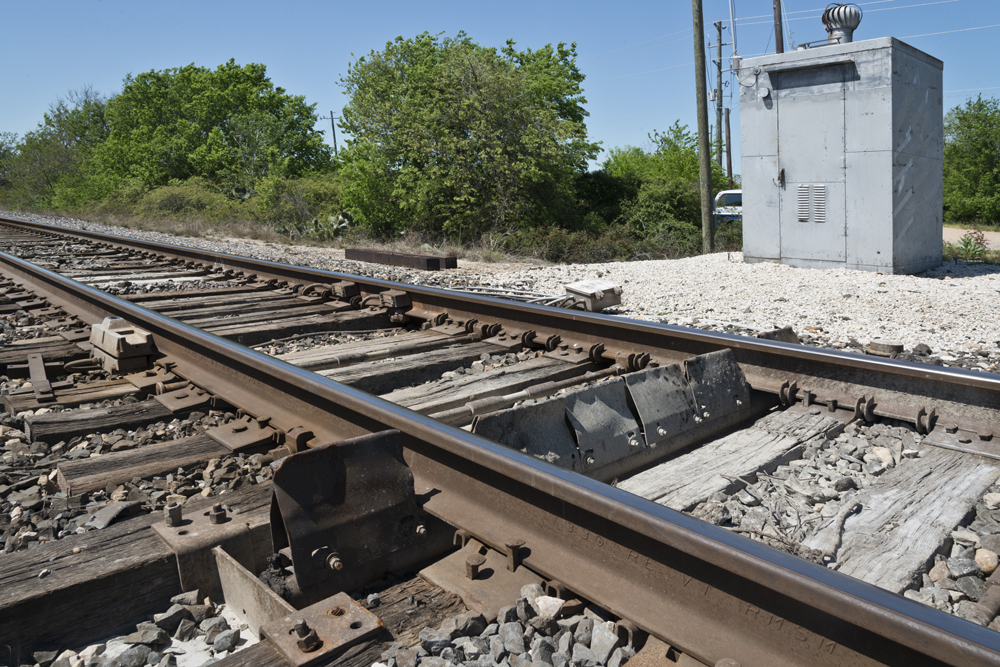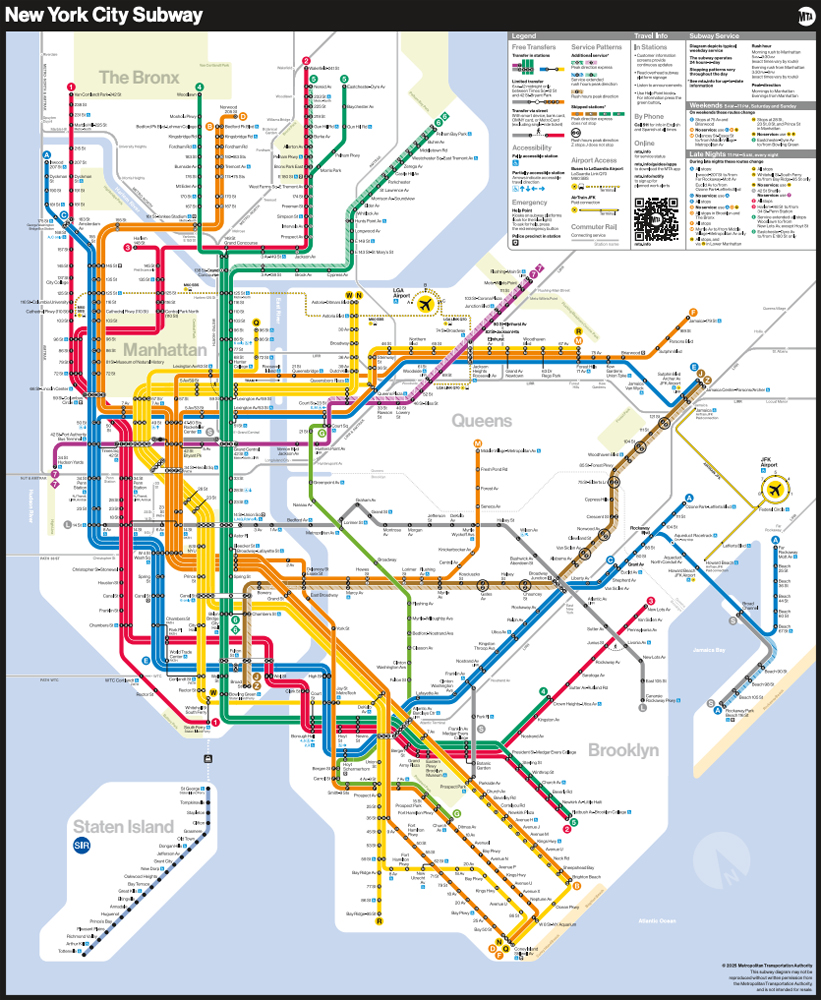
Installing sensors on freight cars is the only way to prevent another disastrous derailment like the Feb. 3 Norfolk Southern hazardous materials wreck in East Palestine, Ohio, a wheel bearing expert says.
Constantine Tarawneh, a mechanical engineering professor who heads the University Transportation Center for Railway Safety at the University of Texas Rio Grande Valley, says adding more wayside hotbox detectors won’t be enough to eliminate derailments caused by wheel bearing failures.
“Temperature is just not the way to measure the condition of a rotating object. Period. It’s a good secondary measure, but not a primary measure. And so I don’t care how close you space them … it’s not going to help,” Tarawneh said in an interview last week.
The Rail Safety Act of 2023, which was filed last week in the Senate, would require railroads to place hotbox detectors every 10 miles. Today detectors are spaced an average of 25 miles apart, according to the Federal Railroad Administration.
There’s no question that hotbox detectors work. Train accident rates caused by axle and bearing-related factors have dropped 81% since 1980 and 59% since 1990 due to the use of hot bearing detectors, according to the FRA.
But bearings can overheat quickly, the FRA says, and can burn off in as little as 1 to 3 minutes. Hotbox detectors failed to diagnose 124 severely defective bearings in the U.S. and Canada from 2010 to 2018, 117 of which resulted in derailments.
“The one in East Palestine caught everyone’s attention because of the hazardous materials,” Tarawneh says. “These are accidents waiting to happen. They might not happen that often, but they will continue to happen because we’re just taking a shot and hoping that these wayside detectors are effective.”
The shortcoming of both hotbox detectors and wayside acoustic detectors is that they are reactive and can only catch late-stage defects that pose an immediate safety threat, Tarawneh says.
A proactive solution, he says, would be to outfit rolling stock with accelerometers that can detect telltale vibrations in wheel bearings up to 50,000 miles before they become a safety hazard.
The research team at University Transportation Center for Railway Safety has developed a battery-powered sensor module that can measure the operating load, temperature, and vibration levels within a bearing. It wirelessly sends the data to a central computing unit for analysis. The system can warn railcar owners of defects thousands of miles in advance of a potential failure and provide an estimate of how long the bearing can safely remain in service.
The system has been tested in the center’s laboratory as well as on test track at the MxV Rail Transportation Technology Center in Colorado.
Some bearings can fail without getting hot enough to trigger a hotbox detector until a few minutes before a derailment, as was the case in East Palestine. On-board sensors would have flagged the problematic bearing several months beforehand, Tarawneh says.
Amsted Rail, which supports research at the University Transportation Center for Railway Safety, is among the companies that offer on-board sensor equipment.
RailPulse, the freight car telematics joint venture spearheaded by Norfolk Southern, is testing on-board sensors that track a car’s location, whether it’s empty or loaded, whether it’s experienced a significant impact event, whether the hatches or doors are open or closed, and whether the hand brakes are on or off.
The initial pilot program – which involves NS and RailPulse members Union Pacific, short line holding companies Genesee & Wyoming, Watco, and Railroad Development Corp., and car manufacturers and leasing companies GATX, Greenbrier, and Trinity – is not testing wheel bearing monitors.
But RailPulse General Manager David Shannon says the goal is to ultimately monitor wheel bearing health. “We are very interested in it,” he says.
Taranweh says it might cost $1,000 to retrofit a freight car with a wheel-bearing sensor system.
Byron Porter, the founder and CEO of telematics company Hum Rail, which licensed the rights to the University of Texas system, estimates that wheel bearing monitoring would cost between $400 and $500 per year for the 15-year life of its equipment. “That includes hardware, bearing condition, wheel kips (exactly like a wheel impact load detector system), truck hunting monitoring, impact detection, GPS, software and firmware updates, and data access, either through APIs or through our own website,” he says.
Around two-thirds of the 1.6 million freight cars in North America are owned by shippers or leasing companies.
“What I’ve been telling folks is there are three ways to look at the additional cost to outfit their own fleet,” Porter says. “A fraction of the total cost for a new build (0.5-2%). An insurance premium that keeps your name out of the headlines. Less than the East Palestine derailment is going to cost NS.”
It costs about $200,000 to install a hotbox detector on a single track main line and $350,000 on double iron. More than 6,000 hotbox detectors are currently in service. To double that figure to reduce spacing between detectors, it would cost between $1.2 billion and $2.1 billion.
Equipping the entire freight car fleet with wheel bearing monitors might cost $1.6 billion or more. But the telematics system would also provide shippers with real-time car location, other car health data, and significantly reduce the number of trains that need to stop and set out cars while en route.
Taranweh says the industry should start by adding wheel bearing sensors to tank cars and other cars that carry hazardous materials. Outfitting the entire fleet would take years. “It might take a decade or even two decades. But we have to start somewhere,” he says.
The Biden administration has backed the Rail Safety Act, but the FRA has yet to take a formal position on all of the bill’s provisions, an agency spokesman says.
“Both wayside detectors and on-board sensors are expected to be discussed at length during an upcoming meeting of the Railroad Safety Advisory Committee that will be announced in the very near future,” FRA spokesman Warren Flatau says. “Otherwise, it’s a bit premature to opine on the views of one researcher about the virtues of one technology over another until such time that a more comprehensive examination is undertaken related to potential future regulatory activity.”
National Transportation Safety Board Chair Jennifer Homedy says the board’s investigation of the East Palestine derailment will include an analysis of wayside detection systems, how railroads use their data, and whether temperature thresholds should be set at a lower level.
The board also will look at alternatives to the traditional hotbox detector, including acoustic detectors and on-board sensor systems.
“We like redundancy at the NTSB so there’s more than one way to ensure safety,” Homendy said today in a webcast with The Washington Post. “We will look at all the technologies out there and make a recommendation.”
Some in the railroad industry are skeptical that on-board sensors can be rugged enough and reliable enough to be as effective as wayside detectors.













As the cost per car are considered, don’t forget that some cars are in seasonal service and spend over half the year in storage and not in revenue service. The added cost of installation and maintenance of monitoring equipment may encourage owners to reduce the seasonal use fleets.
In the above article they talk about it coating about $1,000 to retrofit each car plus $400-$500 a year in maintenance. Initially it doesn’t sound like much money but their is a catch. They mentioned that the system has a life of 15 years. Most rail cars have a life of 35-40 years (except tank cars carrying Hazmat materials). The system would need changing multiple times over the life of the car. Also technology changes quickly. This system would be dated in just a few years, and a new improved system would be introduced.
Think of it like Microsoft’s Windows. In the last 15 years, how many versions have been introduced and in half of these, the older versions are NOT now supported with software updates.
Having to mount all of these different sensors on every freight car……….sounds like a bad plan. As was pointed out above, the wayside detectors worked just fine monitoring the bearings and an extremely simple algorithm, along with a designated change in temperature between detectors, and you can do this without having to equip every car in the fleet.
Remember this. Bearings are the only item this actually inspected while the train is in motion. Dragging equipment was an add-on. WILD detectors and other equipment monitors are installed near terminals where the cars are easily culled as needed.
We are making a huge mountain over what is a very fixable problem.
And I will say this. If this accident had happened 7 miles outside of town, would we be going through all of this angst at this point?
A pound of cure for an ounce of prevention…
Hmmm. Battery powered sensors. One per wheel means 8 per car. How long would these batteries last? How much would one cost? How long to replace one? What indication is given for a low battery? Who bears the cost of a battery replacement? The car’s owner? The railroad the car is on? If a battery goes dead while the car is enroute in a train, with a subsequent accident, how is responsibility assigned? These are all maintenance costs that somebody must pay. Or will we have to run a HEP line through all freight cars in the train to power the many sensors being placed on board?
Hmmm, the price just rose to 12.8 billion per Roger’s figures… Get out your wallets, guys…
Roger Thomas is right with his pointing out the issues.. and to add, as a car owner, I am not paying for it. Also, the time to spend to replace the wheel sets with these bearing sensors takes the car out of service well, for how long and how much money do I lose while this is going on? Good Reply Mr. Thomas…
If the bean counters complain about the cost, what is the cost of a derailment? Someone needs to think of Murphy’s Law.
What happens when an eastbound train derails into the lead of a westbound? Now your talking several millions for the locomotives.
A chain is only as strong as its weakest link. Requiring a railcar with sensors to give a little warning of problems. Maintenance with good sensors, one of the ways US Airlines keep flying long distances with only two engines and a two person flight crew.
An aircraft costs in the tens of millions of dollars, what does a railway train cost? Locomotives were in the multi million dollar category last time I looked.
If you want to play big, act big.
Good point, Ian.
On-board detection is the ONLY way to go if the goal is derailment prevention due to bearing failure.
At the very least, DD locations must be networked so that heat signatures can be compared while a train is moving.
As noted in this article, an overheated bearing is in its last stages of failure. Even at 10 mile intervals, a bearing on a loaded car can clear a DD with no defects and completely fail within 10 miles. Such failures do occur, and will continue to occur until on-board monitoring is in place.
Amfleet cars have their own sensors. They also have HEP to provide power and hard wire communication with the motor or cab car to report an anomaly.
Onboard monitors give continuous readings, not just when car goes over a sensor every XXX miles.
If you are going to sensors on tank cars, you need to put them on entire fleets. While tank car derailments and spills are dangerous and can cause injury and death to anybody either operating crews or trackside and towns and villages freight cars loaded with lumber, paper, coal, sand and gravel as well as auto transport cars and even Gunderson well cars that carry those containers are just as dangerous and can wreak havoc if they derail. Imagine if the railroads were still transporting cattle and lvestock and those cars derailed and the animals got loose What a mess and hassle with cattle get killed or injured not to mention hours spent trying to round up the animals and get them back into either a holding pen or another train. Or another scenario if the Ringling Brothers and Barnum and Baliey Circus train would have had a major derailment and the cages on the train were to break loose and lions and tigers and elephants getting loose and causing fear and panic in the town or area where the derailment occured. Of course the two scenarios what I just mentioned will never occur since the circus disbanded and cattle and livestock are no longer transported by rail. But plenty of other goods and merchandise that is not hazardous materails or chemicals that get transported by rail and regardless of what you read and hear, freight cars are not inspected the way they should and due to way the railroads are trying to do more with less resources and manpower in the name of the almighty dollar, freight cars are sent out with loads run after run with very little tought for safety or inspection. Sensors on all freight cars are a great idea and any amount of money spent on installation will pay for itself over and over again and with safer and smoother travel. Railroads are still the safest and most cost effective way to move goods and materials over long distances but there has to be better safety and inspection procedures put in place. Joseph C. Markfelder
Good points. I think they should start with tank cars first, then to the rest of the freight rail fleet. And while we’re at, passenger cars, too!
The car that had the burnt-off journal was not a tank car and did not carry HazMat, and so would not be a first-level candidate for sensors.
What is the rate of occurrence of journal failures?
What is the cost of equipping a car with these sensors, and the associated tech to capture and act upon a sensor alarm?
In this “horrific” derailment, there have been no reported deaths or injuries.
Correction: No reported death of humans, but lots of fish and flora!. Otherwise good point
No deaths to humans from the derailment, but from the long term affects stemming from the burning of the toxic chemicals, TBD.
so are they saying that wayside detectors aren’t good for detecting defects on railroad cars ?
No, they are saying that car-mounted sensors would be better.
well true but wayside detectors are reliable
1.6 billion sounds like a cheap enough if that will fix the problem. NS will spend that much over the next 30 years just taking care of E. Palestine.
1.6 billion is just an estimate. It does not include ongoing maintenance and IT costs. And who will pay for it? The owners of the cars who will pass along that cost to the eventual consumer. You know what always flows down hill.
I say we should let the improvements to wayside detectors have a chance to work before we launch off providing business for companies who want to sell no matter the cost. More detectors, revised operating procedures and much shorter trains might be a better investment.
Why don’t they start with comparing temperatures between detectors. I read somewhere that the temperature of the suspected culprit bearing rose between the last three detectors it passed. Couldn’t a simple algorithm detect that? Even if all the tank cars had been outfitted with bearing sensors, the derailment would have still occurred because the defect was not on a tank car.
The point in the article is that car-mounted sensors should be on all cars, not just tank cars.
Which is why I said START with comparing temperatures. Adding lines of programming would be cheaper and quicker to implement while waiting for the installation of sensors to be installed on ALL cars.
You are right. This can be done right now and should push the failure numbers down. The communcation is there because of PTC, it should be used.
There is not much reason to for the railroads to oppose any of this including car mounted detectors, since most of the fleet is not owned by them.
Batteries can last a long time if the circuit is controlled by a microprocessor that quickly looks at the sensors once a minute. There should be no reason to send the data more frequently. It could be less depending on the data being transmitted, with certain combinations requiring emergency communication.